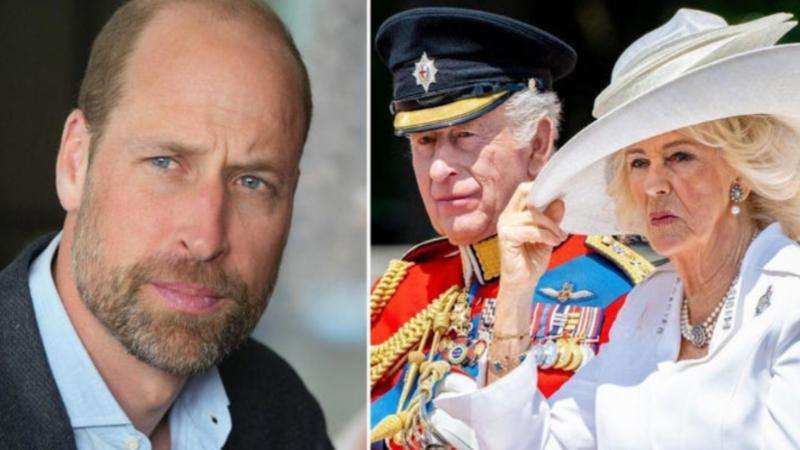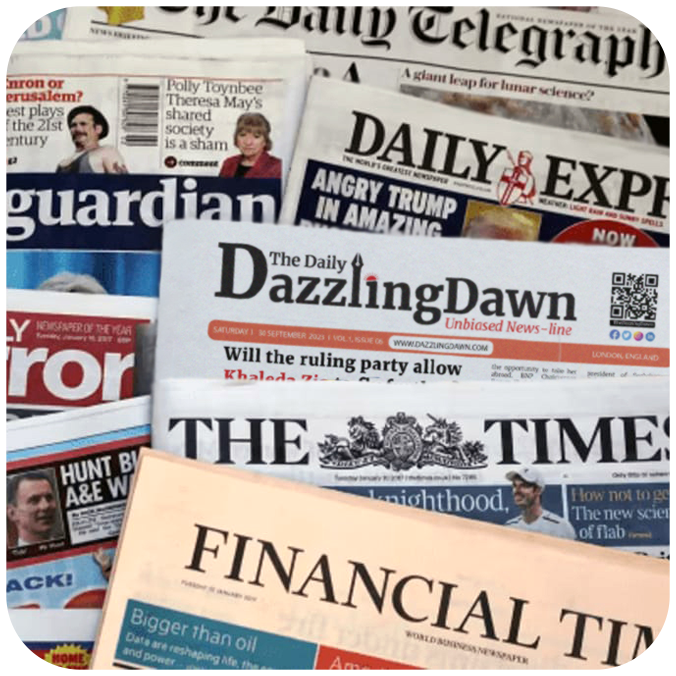
Bangladesh and India began settling their bilateral trade transactions in Indian Rupee (INR), beginning a new era of local currency settlement that will wean both countries off of their reliance on the US dollar.
Bangladesh has been facing a major foreign exchange reserve crisis for a year. Bangladesh has long faced a current account deficit in international transactions. Bangladesh has been forced to take a conservative position in terms of imports.
But reducing imports is not a solution to the problem. In order to increase the status of foreign exchange, Bangladesh has to continuously earn more from abroad. And the source of income is our export income, the remittance of income to the country by people of our country who are abroad, and another source is foreign investment.
Receivables from foreign loans can also increase the foreign exchange position. However, taking everything into account, it does not seem that Bangladesh Bank will be able to increase the foreign exchange fund. The main reason for this is that our debt to foreign creditors has increased in the last two years. Foreign loans must be repaid in reserve currencies, such as the US dollar, the British pound, the euro, the Japanese yen, or the Chinese yuan. Earlier, 1 dollar was available for 86 taka; now the government has to buy that dollar for 108 taka to repay the debt.
Our external debt-to-GDP ratio is already going against us. This is where you need to be careful. While the dollar crisis is more pronounced in Bangladesh, it is not so in India.
Bangladesh has agreed to trade with India in rupees as a strategy to overcome the dollar crisis. The question is, why should India trade with Bangladesh in rupees? The rough answer is that India wants to internationalize its currency, the rupee. Indian currency The rupee is not an internationally recognized reserve currency. However, India wants that if the use of this currency increases in bilateral trade, the acceptance of Indian currency will increase. Maybe one day India will start trying to value its reserve currency.
Even if the two countries agree to trade in taka-rupee, we believe that the use of these two currencies will be limited. Where can Bangladesh get rupees to buy goods from India? The only source of power is Bangladesh's export value to India, which is equivalent to $2 billion a year. Another source of rupees is if India lends to Bangladesh in rupees and Bangladesh agrees to borrow in rupees. Despite this, the inflow of rupees into Bangladesh will be very low.
On the other hand, India exports products worth 14 billion dollars to Bangladesh annually. If India agrees to accept Bangladeshi currency, Taka, against these exports, then India's income from foreign sources will add Rs 14 billion equivalent. This number is huge. Will India agree to hold so much money in Bangladesh? There is no reason to disagree. Where is the use of the money for them? That is the only one in the Bangladesh market. This means that if India wants to use more of its money, it will have to import more goods from Bangladesh.
This favorability may increase in the future. In that case, it is not likely that India will accept the full amount due against our imports in rupees. In the end, Bangladesh will have to pay a large part of the trade debt in dollars.
So the point is, only 2 billion dollars can be transacted in terms of trade between Bangladesh and India in taka-rupees. Bangladesh should be prepared to pay India the rest in other reserve currencies.
The currency of the other country will accumulate more in the hands of the country that favors the balance of trade. Want to use that accumulated currency. If that country cannot use that currency in international transactions, then at some point it will no longer accept that currency. As has been the case with India-Russia trade.
As India buys more currency commodities (oil in this case) from Russia, more Indian currency is deposited in Russia. But the problem is that Russia is not able to use the Indian Rupee to buy goods from countries other than India.
This problem would not have existed if the Indian currency was a recognized reserve currency. Russia refused to sell oil in Indian currency while India was sitting on sacks of rupees. As a result, India was forced to pay Russia in another reserve currency, the Chinese Yuan. The same situation can happen in the case of Bangladesh-India trade. As India sells high-value goods to Bangladesh, they too will eventually refuse to accept the Bangladeshi currency, the taka. They would then want Bangladesh to pay them in either dollars or yuan.
Another problem in the case of trading in taka-rupee is: what will be the exchange rate between these two currencies? For this reason, another reserve currency must be used as a reference currency. In this case, the other referenced reserve currency will be the US dollar. The exchange rate of the taka-rupee will be determined based on the fluctuation of these two currencies against the dollar.
But the question will remain: are these two currencies fully exchangeable against the dollar on a market basis? If the exchange rate is fixed by the central bank of the two countries, it cannot be called market-based exchangeable. The exchange should be based on market demand and supply. So before trading in taka-rupees, one should see if any country is artificially maintaining the value of their currency.
Writer:
Kaberi Maitraya
Senior Reporter
Ekattor Television.
 Bangladesh and India began settling their bilateral trade transactions in Indian Rupee (INR), beginning a new era of local currency settlement that will wean both countries off of their reliance on the US dollar.
Bangladesh has been facing a major foreign exchange reserve crisis for a year. Bangladesh has long faced a current account deficit in international transactions. Bangladesh has been forced to take a conservative position in terms of imports.
But reducing imports is not a solution to the problem. In order to increase the status of foreign exchange, Bangladesh has to continuously earn more from abroad. And the source of income is our export income, the remittance of income to the country by people of our country who are abroad, and another source is foreign investment.
Receivables from foreign loans can also increase the foreign exchange position. However, taking everything into account, it does not seem that Bangladesh Bank will be able to increase the foreign exchange fund. The main reason for this is that our debt to foreign creditors has increased in the last two years. Foreign loans must be repaid in reserve currencies, such as the US dollar, the British pound, the euro, the Japanese yen, or the Chinese yuan. Earlier, 1 dollar was available for 86 taka; now the government has to buy that dollar for 108 taka to repay the debt.
Our external debt-to-GDP ratio is already going against us. This is where you need to be careful. While the dollar crisis is more pronounced in Bangladesh, it is not so in India.
Bangladesh has agreed to trade with India in rupees as a strategy to overcome the dollar crisis. The question is, why should India trade with Bangladesh in rupees? The rough answer is that India wants to internationalize its currency, the rupee. Indian currency The rupee is not an internationally recognized reserve currency. However, India wants that if the use of this currency increases in bilateral trade, the acceptance of Indian currency will increase. Maybe one day India will start trying to value its reserve currency.
Even if the two countries agree to trade in taka-rupee, we believe that the use of these two currencies will be limited. Where can Bangladesh get rupees to buy goods from India? The only source of power is Bangladesh's export value to India, which is equivalent to $2 billion a year. Another source of rupees is if India lends to Bangladesh in rupees and Bangladesh agrees to borrow in rupees. Despite this, the inflow of rupees into Bangladesh will be very low.
On the other hand, India exports products worth 14 billion dollars to Bangladesh annually. If India agrees to accept Bangladeshi currency, Taka, against these exports, then India's income from foreign sources will add Rs 14 billion equivalent. This number is huge. Will India agree to hold so much money in Bangladesh? There is no reason to disagree. Where is the use of the money for them? That is the only one in the Bangladesh market. This means that if India wants to use more of its money, it will have to import more goods from Bangladesh.
This favorability may increase in the future. In that case, it is not likely that India will accept the full amount due against our imports in rupees. In the end, Bangladesh will have to pay a large part of the trade debt in dollars.
So the point is, only 2 billion dollars can be transacted in terms of trade between Bangladesh and India in taka-rupees. Bangladesh should be prepared to pay India the rest in other reserve currencies.
The currency of the other country will accumulate more in the hands of the country that favors the balance of trade. Want to use that accumulated currency. If that country cannot use that currency in international transactions, then at some point it will no longer accept that currency. As has been the case with India-Russia trade.
As India buys more currency commodities (oil in this case) from Russia, more Indian currency is deposited in Russia. But the problem is that Russia is not able to use the Indian Rupee to buy goods from countries other than India.
This problem would not have existed if the Indian currency was a recognized reserve currency. Russia refused to sell oil in Indian currency while India was sitting on sacks of rupees. As a result, India was forced to pay Russia in another reserve currency, the Chinese Yuan. The same situation can happen in the case of Bangladesh-India trade. As India sells high-value goods to Bangladesh, they too will eventually refuse to accept the Bangladeshi currency, the taka. They would then want Bangladesh to pay them in either dollars or yuan.
Another problem in the case of trading in taka-rupee is: what will be the exchange rate between these two currencies? For this reason, another reserve currency must be used as a reference currency. In this case, the other referenced reserve currency will be the US dollar. The exchange rate of the taka-rupee will be determined based on the fluctuation of these two currencies against the dollar.
But the question will remain: are these two currencies fully exchangeable against the dollar on a market basis? If the exchange rate is fixed by the central bank of the two countries, it cannot be called market-based exchangeable. The exchange should be based on market demand and supply. So before trading in taka-rupees, one should see if any country is artificially maintaining the value of their currency.
Writer:
Kaberi Maitraya
Senior Reporter
Ekattor Television.
Bangladesh and India began settling their bilateral trade transactions in Indian Rupee (INR), beginning a new era of local currency settlement that will wean both countries off of their reliance on the US dollar.
Bangladesh has been facing a major foreign exchange reserve crisis for a year. Bangladesh has long faced a current account deficit in international transactions. Bangladesh has been forced to take a conservative position in terms of imports.
But reducing imports is not a solution to the problem. In order to increase the status of foreign exchange, Bangladesh has to continuously earn more from abroad. And the source of income is our export income, the remittance of income to the country by people of our country who are abroad, and another source is foreign investment.
Receivables from foreign loans can also increase the foreign exchange position. However, taking everything into account, it does not seem that Bangladesh Bank will be able to increase the foreign exchange fund. The main reason for this is that our debt to foreign creditors has increased in the last two years. Foreign loans must be repaid in reserve currencies, such as the US dollar, the British pound, the euro, the Japanese yen, or the Chinese yuan. Earlier, 1 dollar was available for 86 taka; now the government has to buy that dollar for 108 taka to repay the debt.
Our external debt-to-GDP ratio is already going against us. This is where you need to be careful. While the dollar crisis is more pronounced in Bangladesh, it is not so in India.
Bangladesh has agreed to trade with India in rupees as a strategy to overcome the dollar crisis. The question is, why should India trade with Bangladesh in rupees? The rough answer is that India wants to internationalize its currency, the rupee. Indian currency The rupee is not an internationally recognized reserve currency. However, India wants that if the use of this currency increases in bilateral trade, the acceptance of Indian currency will increase. Maybe one day India will start trying to value its reserve currency.
Even if the two countries agree to trade in taka-rupee, we believe that the use of these two currencies will be limited. Where can Bangladesh get rupees to buy goods from India? The only source of power is Bangladesh's export value to India, which is equivalent to $2 billion a year. Another source of rupees is if India lends to Bangladesh in rupees and Bangladesh agrees to borrow in rupees. Despite this, the inflow of rupees into Bangladesh will be very low.
On the other hand, India exports products worth 14 billion dollars to Bangladesh annually. If India agrees to accept Bangladeshi currency, Taka, against these exports, then India's income from foreign sources will add Rs 14 billion equivalent. This number is huge. Will India agree to hold so much money in Bangladesh? There is no reason to disagree. Where is the use of the money for them? That is the only one in the Bangladesh market. This means that if India wants to use more of its money, it will have to import more goods from Bangladesh.
This favorability may increase in the future. In that case, it is not likely that India will accept the full amount due against our imports in rupees. In the end, Bangladesh will have to pay a large part of the trade debt in dollars.
So the point is, only 2 billion dollars can be transacted in terms of trade between Bangladesh and India in taka-rupees. Bangladesh should be prepared to pay India the rest in other reserve currencies.
The currency of the other country will accumulate more in the hands of the country that favors the balance of trade. Want to use that accumulated currency. If that country cannot use that currency in international transactions, then at some point it will no longer accept that currency. As has been the case with India-Russia trade.
As India buys more currency commodities (oil in this case) from Russia, more Indian currency is deposited in Russia. But the problem is that Russia is not able to use the Indian Rupee to buy goods from countries other than India.
This problem would not have existed if the Indian currency was a recognized reserve currency. Russia refused to sell oil in Indian currency while India was sitting on sacks of rupees. As a result, India was forced to pay Russia in another reserve currency, the Chinese Yuan. The same situation can happen in the case of Bangladesh-India trade. As India sells high-value goods to Bangladesh, they too will eventually refuse to accept the Bangladeshi currency, the taka. They would then want Bangladesh to pay them in either dollars or yuan.
Another problem in the case of trading in taka-rupee is: what will be the exchange rate between these two currencies? For this reason, another reserve currency must be used as a reference currency. In this case, the other referenced reserve currency will be the US dollar. The exchange rate of the taka-rupee will be determined based on the fluctuation of these two currencies against the dollar.
But the question will remain: are these two currencies fully exchangeable against the dollar on a market basis? If the exchange rate is fixed by the central bank of the two countries, it cannot be called market-based exchangeable. The exchange should be based on market demand and supply. So before trading in taka-rupees, one should see if any country is artificially maintaining the value of their currency.
Writer:
Kaberi Maitraya
Senior Reporter
Ekattor Television.







.svg)

